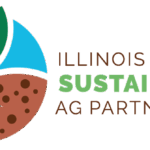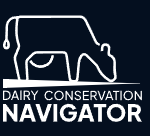Soil Health

Digging Deeper – Cover Crops & N2O Emissions
A pair of short-duration studies on Illinois fields suggested that cover crops reduce nitrate leaching (a win for water quality) but may increase nitrous oxide (N2O, a greenhouse gas). ISAP wanted to dig deeper into potential trade-offs and understand the environmental costs and benefits of cover crops.
This guide describes denitrification, a microbial process that is responsible for most N2O emissions from agricultural soils, and breaks down scientific literature to understand the larger picture of cover crops and N2O.

Digging Deeper – More Than Trash – Why Residue Matters
More Than Trash – Why Residue Matters breaks down how residue from each crop impacts soil nitrogen availability. The resource explores key questions related to decomposition of residue, soil microbial activity, and why certain crop rotations require more N fertilizer than others. Ever wonder how soybean residue influences nitrogen availability for the next crop? Check out this resource to answer this question and many more!
To explore more resources, visit ISAP’s Digging Deeper page to access more soil health focused resources. The Digging Deeper series skips the basics, and digs right into the issues at hand. These resources provide detailed science-backed information for farmers and their advisors.
Download Documents
Field Day Toolkit
This Field Day Toolkit is the product of Iowa Learning Farms’ many years of planning and hosting field day events across the state of Iowa. While ILF utilizes many different outreach approaches, the importance of farmer-to-farmer interactions cannot be overstated. Field days do matter!
View Website Download Documents
Dairy Conservation Navigator
Dairy Conservation Navigator is an online platform that consolidates science-based information about dairy conservation topics and the practices and technologies that reduce a farm’s environmental footprint. Created by the U.S. Dairy Checkoff, the platform simplifies complex sustainability topics by sharing educational materials and technical insights.
View Website
Digging Deeper: A Comparison Between Standard Soil Tests and the Haney Soil Health Test
The Illinois Sustainable Ag Partnership (ISAP) has released our comparison guide showing the similarities and differences between a standard soil fertility test and the Haney Soil Health Test.
Based the increasing interest among agronomists and farmers alike, ISAP created this resource to dive into some of the finer points of the Haney test and try to help clarify how this test compares to the standard soil fertility test that farmers have been familiar with for decades.
This resource is designed to help agriculturists gain some additional insight into some of the concepts of soil management that often go undiscussed or simply ignored in traditional production systems in Illinois.

Illinois Cover Crop Quick Reference Guide
The Illinois Cover Crop Initiative (ICCI) created this general overview of planting information for common cover crops.
Download Documents